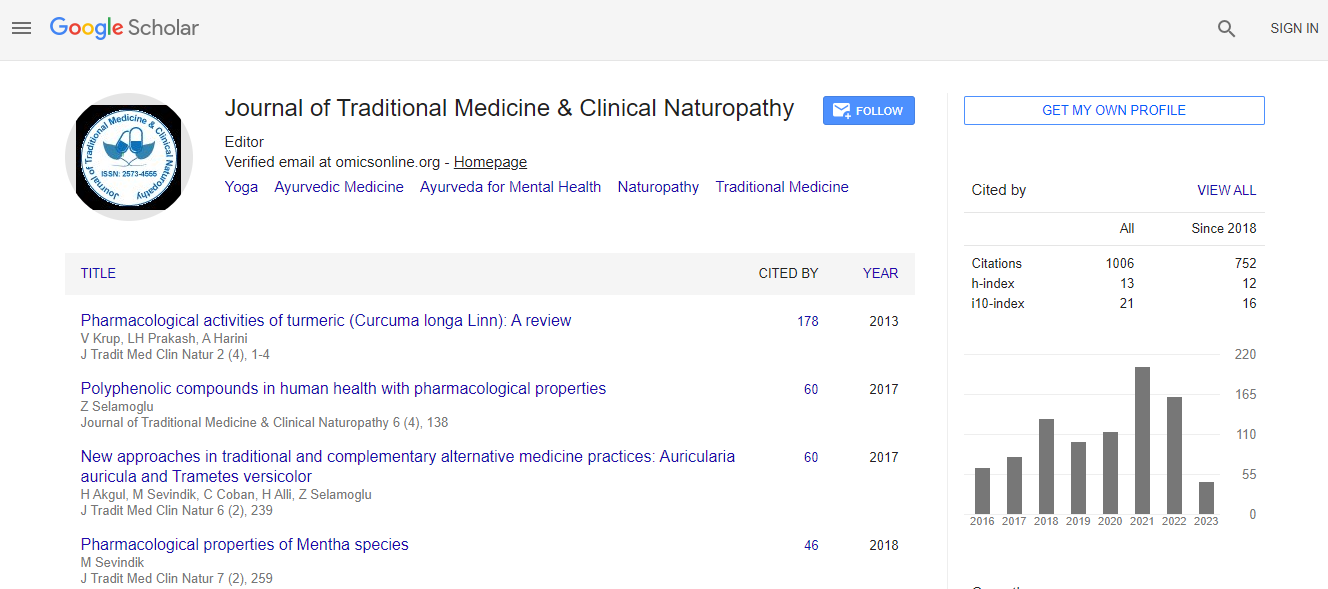Our Group organises 3000+ Global Conferenceseries Events every year across USA, Europe & Asia with support from 1000 more scientific Societies and Publishes 700+ Open Access Journals which contains over 50000 eminent personalities, reputed scientists as editorial board members.
Open Access Journals gaining more Readers and Citations
700 Journals and 15,000,000 Readers Each Journal is getting 25,000+ Readers
Google Scholar citation report
Citations : 1504
Journal of Traditional Medicine & Clinical Naturopathy peer review process verified at publons
Indexed In
- CAS Source Index (CASSI)
- Google Scholar
- Sherpa Romeo
- Open J Gate
- Genamics JournalSeek
- RefSeek
- Directory of Research Journal Indexing (DRJI)
- Hamdard University
- EBSCO A-Z
- Publons
- Geneva Foundation for Medical Education and Research
- Euro Pub
- ICMJE
Useful Links
Recommended Journals
Related Subjects
Share This Page
Antipruritic effects of hypothermic and hyperthermic stimulation on acupuncture-point for dermatitis
6th International Conference and Exhibition on Traditional & Alternative Medicine
Tsai Kao-Sung
China Medical University Hospital, Republic of China
ScientificTracks Abstracts: J Tradi Med Clin Natur
Abstract
Itch is a major subjective symptom in dermatitis. Regarding the needle stimulation and moxibustion on LI11 (Quchi) has been shown to exhibit a significant effect for itch in dermatitis, but the efficacy of hypothermic and hyperthermic stimulation on LI11 for itch is not confirmed. We investigate the effect of hypothermic and hyperthermic stimulation on LI11 for itch and skin reaction in atopic dermatitis patients in a translational research. Our study demonstrated that treatment with lower temperature at the LI11 acupoint significantly attenuated pruritogen-induced scratching in animal study; however, this antipruritic effect was not observed with stimulation at the sham point. The anti-pruritic effect of cold stimulation was blocked by the non-selective transient receptor potential (TRP) channel blocker, suggesting that TRP channels may play an important role in the antipruritic effect of cold stimulation at LI11 in mice. In our clinical trial, subjects stimulated by lower temperature (20�°C) and high temperature (40�°C) at the LI11 acupoint significantly attenuated itch VAS score and level of IL-31 in serum. However, SCORAD index and POEM index only decreased in high temperature subjects. This study demonstrated that cold stimulation at LI11 attenuated pruritogen-induced scratching behavior in mice, possibly by a TRP-related pathway. Not only high temperature at the LI11 acupoint significantly attenuated itch VAS scare in subjects with dermatitis but also lower stimulation at LI11 did.Biography
Tsai Kao-Sung has completed his PhD from China Medical University of Taiwan. He is a Dermatologist, fellow of Asian Academy of Dermatology and Venereology and Director of Taiwanese Dermatological Association. He is also a Lecturer in Hung Kuang University and practices from China Medical University Hospital and Guangyan Dermatology Clinic.
Email: raysclinic@gmail.com

 Spanish
Spanish  Chinese
Chinese  Russian
Russian  German
German  French
French  Japanese
Japanese  Portuguese
Portuguese  Hindi
Hindi 
